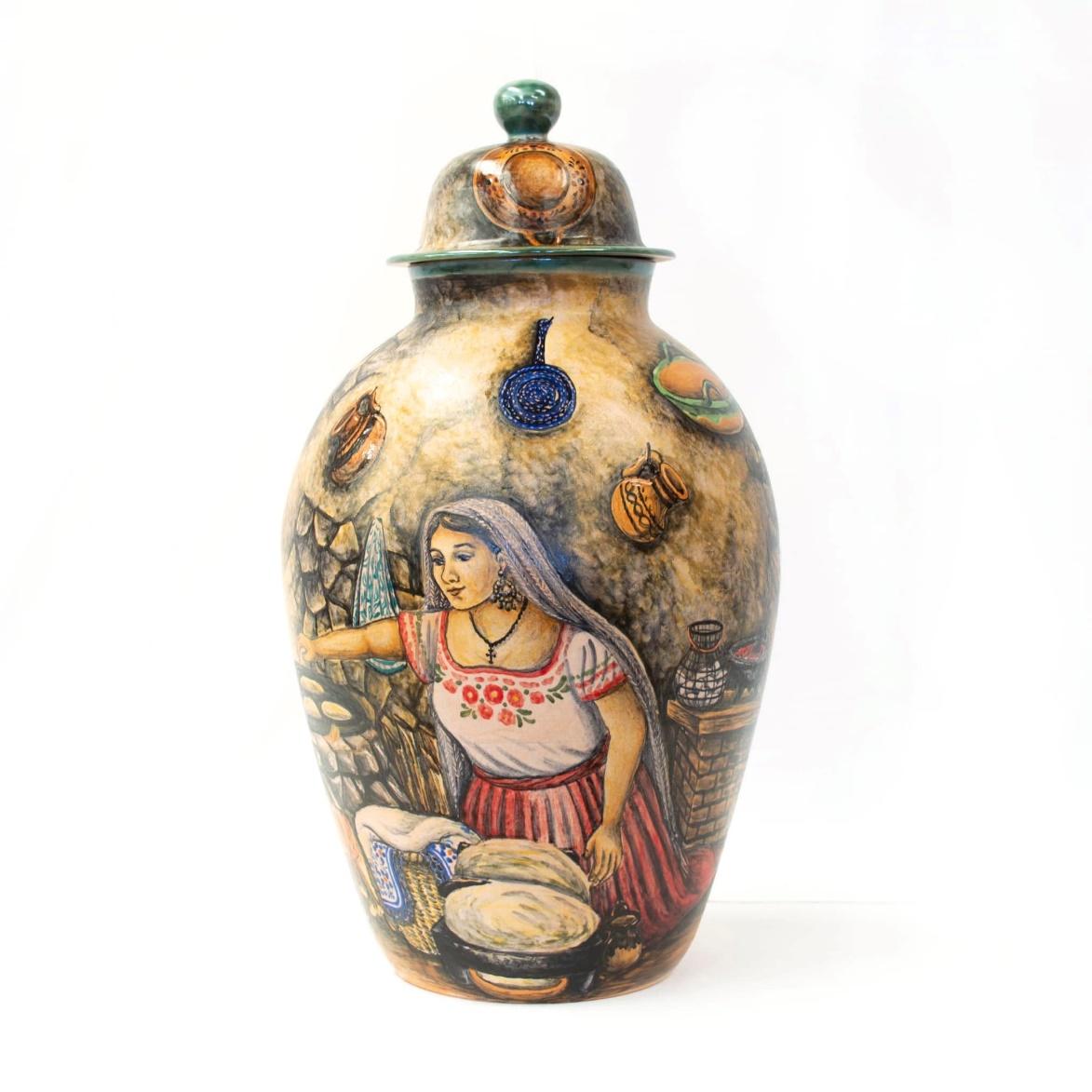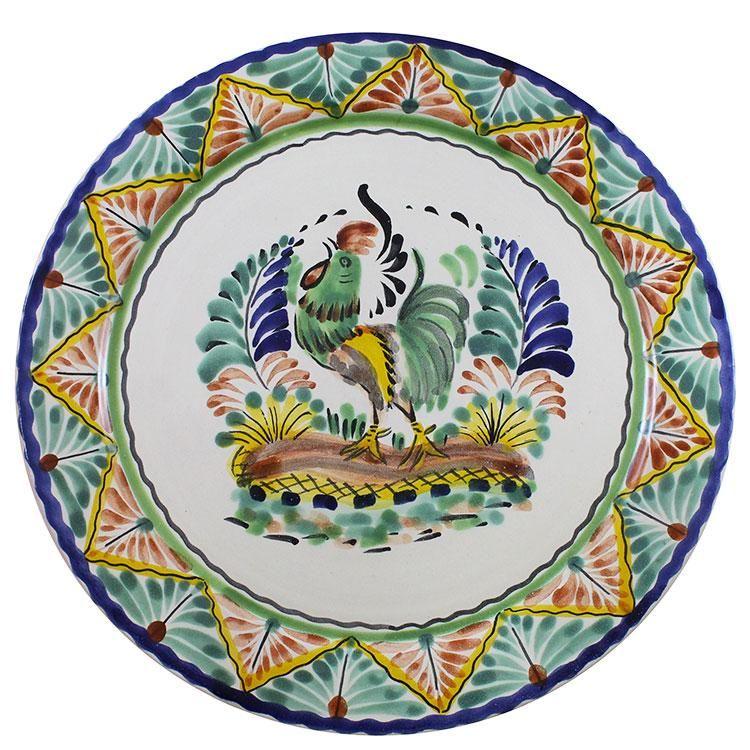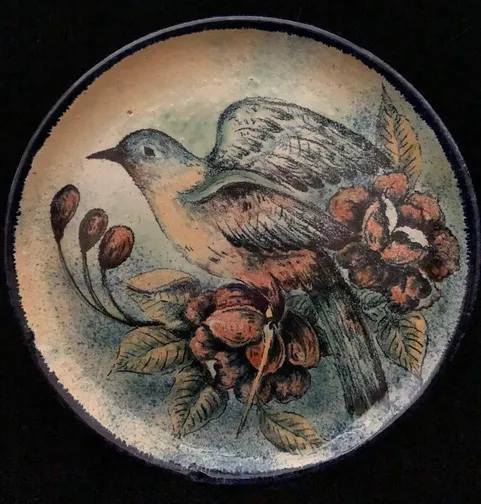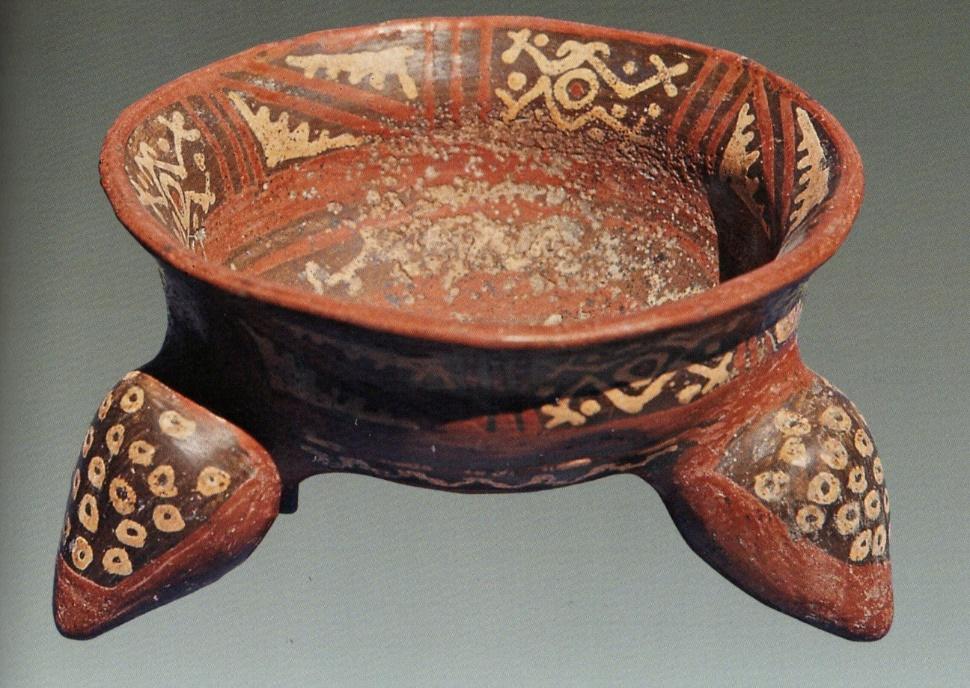Description
El arte de la cerámica es una técnica de fabricación que no surge con la llegada de los Españoles ya que desde periodos anteriores a la conquista tenemos importantes ejemplos como Chupicuaro y alfarería de productos utilitarios en varias de las civilizaciones antiguas . Tanto en Michoacán como en Guanajuato las civilizaciones prehispánicas ya hacían uso del arte de la cerámica pero fuimos agregándole excelencia y belleza por los avances que tanto Lanao de China que venia de Filipinas como la influencia de los 700 años de dominación Árabe en España impacto al brillo y durabilidad que las piezas fueron adquiriendo y con esto un proceso de valorización de la Cerámica.
La artesanía en cerámica es una de las manifestaciones mas visibles de la diversidad cultural del Estado de Guanajuato que refleja identidad y patrimonio. En Guanajuato se presenta un caso particular con la cerámica ya que se aprecia una gran influencia Europea con las características de lo que se denomina cerámica tipo talavera o cerámica tipo mayólica.
Cuando el hombre del México antiguo se convirtió en alfarero ya encontramos en Guanajuato estilos propios de los más bellos de Mesoamérica, esta cerámica aun no tenia brillo pues no se conocían ni los pigmentos ni los esmaltes. La técnica del vidriado y esmaltado del barro cocido se encuentra en este estado en la segunda mitad del siglo XVl. Esta cerámica se conoció como loza y encontramos en la historia que a mediados del siglo XVll se creó el gremio de loceros y reglamentaron su oficio en tres géneros: amarilla, común y fina. En la loza fina se especificaban cualidades y detalles de fabricación. Se considera que Don Miguel Hidalgo y Costilla un héroe de la independencia contribuyo en Guanajuato al auge económico con el florecimiento de talleres de cerámica que se dedicaban a la producción de loza fina para la dasocracia y así mismo otros talleres realizaron figuras utilitarias como macetas, jarras que satisfacían las necesidades de sus habitantes y de las poblaciones vecinas.
Algunos diseños fueron copiados de piezas españolas pero los alfareros fueron adaptando a su gusto y creando un estilo distinto que caracteriza a Guanajuato, en ferias y exposiciones nacionales e internacionales.
english
Ceramics and pottery of Guanajuato
The art of pottery in the State of Guanajuato did not arise with the arrival of the Spaniards. We have important examples from periods before the conquest, such as the “Chupicuaro” culture and pottery for utilitarian products in several ancient civilisations. In Michoacán as well as in Guanajuato the pre-Hispanic civilizations already made use of pottery, but we were adding excellence and beauty through the advances that both the “Nao de China” (cargo ship) that came from the Philippines, as well as the influence of the 700 years of Arab domination in Spain. These pieces acquired brightness and durability. Ceramic craftsmanship is one of the most visible manifestations of the cultural diversity of the State of Guanajuato, reflecting identity and heritage. In Guanajuato, a particular case is presented, since a great European influence can be appreciated with the characteristics of what is called: talavera type or majolica type.
We find in Guanajuato some of the most beautiful styles of Mesoamerica. The surface of the pottery was matt because the glazes were not known. The technique glazing of fired clay is found in this state in the second half of the 15th century. This pottery was known as “earthenware” and we find in history that in the middle of the 17th century, the guild of earthenware makers was created and their trade was regulated into three types: yellow, common and fine earthenware. In the case of fine earthenware, the qualities and details of manufacture were specified.
It is considered that Don Miguel Hidalgo y Costilla, a hero of independence, contributed to the economic boom in Guanajuato with the flourishing of ceramic workshops dedicated to the production of fine earthenware for the aristocracy and other workshops made utilitarian figures such as flowerpots and jugs that satisfied the needs of its inhabitants and neighbouring towns. Some designs were copied from Spanish pieces, but the potters adapted them to their own taste and created a distinct style that characterises Guanajuato in national and international fairs and exhibitions.






Reviews
There are no reviews yet.